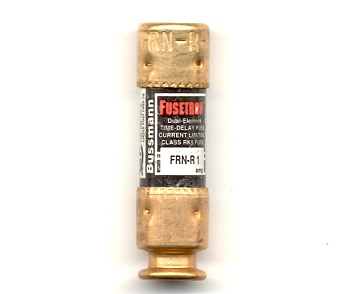What about fuses verses breakers? Each of these serve a purpose in providing overcurrent protection in electrical circuits. They both have pros and cons.
Circuit breakers are reusable whenever an electrical circuit experiences an overcurrent in the circuit, which then trips the breaker. The breaker is simply reset with its switch handle. This, at first appearance, can effectively reduce the cost of overcurrent protection especially if you experience high incidents of overcurrents. However, there are still some drawbacks with breakers when comparing them to fuses.
For one, circuit breakers have mechanical parts, which creates an inherent increase in required maintenance for the breakers.
Breakers need to be exercised periodically by switching them. This essentially interrupts active loads. Fuses do not have any moving parts. Therefore, eliminating this kind of maintenance. The cost for maintenance for circuit breakers needs to be factored in when considering the use of fuses verses circuit breakers. Safety may be compromised if breakers are not maintained properly or replaced when the integrity of the breaker has been degraded. Also the associated circuit breaker equipment needs to be maintained, such as the breaker and wire termination points, and ensuring proper mounting.
Fuse associated equipment also needs to be maintained with its terminations, clips, and disconnects; but again, there are no moving parts.
Fuse links are not reusable. Once they experience an overcurrent such as short-circuit or overload beyond its rated limits, it opens (blows) by the fuse link melting. You have to replace the fuse with a new fuse or fuse link. Ironically, here is where using fuses shine. Where circuit breakers can degrade by their movable parts, this can lead to a breaker’s calibrated settings being affected, this does not happen to a fuse.
This is important for various types of circuitry and loads to be protected. If the calibration of the circuit breaker is adversely affected and does not open when called upon based on its current rating, this could possibly damage the conductors or the loads being protected. This also could pose a fire hazard. Using fuses eliminates this potential problem.
Other circuit breaker failure considerations are a burned out trip coil or the trip mechanism becoming immovable because of corroding buildup, dirt, and/or dried out lubricant. Certain breakers with electronic components can also fail when the electronic component fails. Again, these problems can result in a fire hazard to life and property.
Whenever a fuse is called upon to perform its action of protection by the fuse link opening, a new fuse is installed providing optimum calibration settings. Because of this, using fuses provides reliability and confidence of performance beyond that of circuit breakers.

